Disclosure: This post is sponsored by WORX Tools, all opinions are my own!
I have a long list of “DIY Bucket list Projects” and I have a feeling I’m going to check a lot of those off with this new house! I’m always up for a challenge, a learning experience and for a good before and after! I was able to check one of those items off with my first big DIY project on this house! Today, I want to talk about my experience installing a tongue and groove ceiling treatment in the new office and the tools I used!
This was my first time installing a plank ceiling and when it comes to ANY first time project, having the right tools is key. It may feel like a large expense up front, but investing in the proper tools that make the right cuts will save you time and money in the long run and will also make your project more professional. I’ll be sharing all the tools I used for this project and which ones I recommend!
Office Space Before
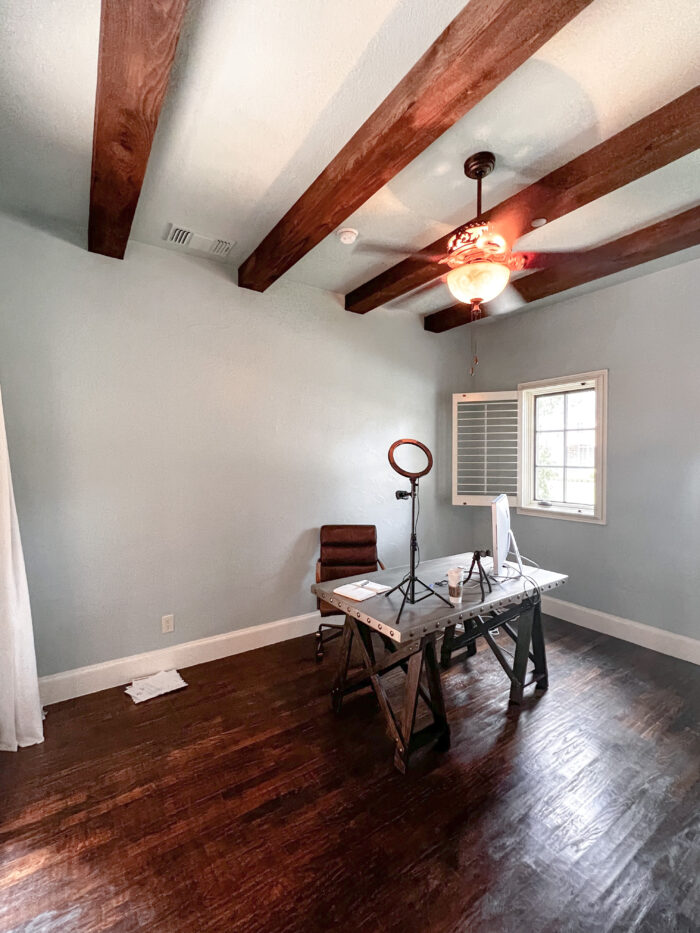
Here is what this space looked like when we first moved in (see our full house tour here)! I adore the wood beams we have throughout the house and only want to accentuate them even more. My goal was to modernize this space and bring even more character to it. You can see my vision for this space here.
My first project in here is installing a tongue and groove ceiling between the beams to give it more texture and dimension.
Installing a Tongue and Groove Ceiling
Supplies

- Brad Nailer
- Miter Saw
- Circular Saw
- Jig Saw
- Drill (I LOVE the Switchdriver!)
- Work Table / Saw Horse
- Mallet
- Tongue and Groove Planks
- Shoe Trim Moulding
- Liquid Nails
- 2″ Brad Nails
- Wood Filler
- Sand Paper
- Measuring Tape
Installing A Plank Ceiling
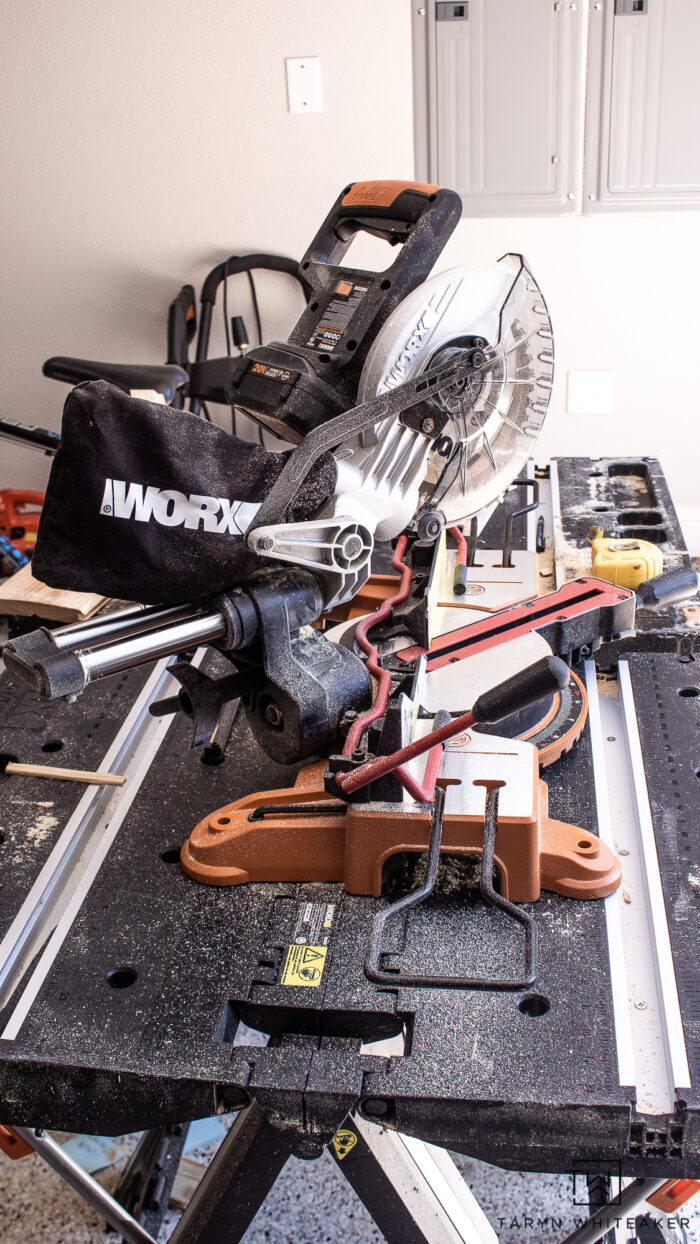
Cut your planks down to size. I used my WORX Tools Miter Saw to cut all of my tongue and groove planks to the proper size. This saw is one of my favorites and really helped improve my DIY projects. I love how it is battery operated so I can set it up anywhere. It’s also a sliding compound saw so it can cut wider pieces of wood as you slide it out and push it back in when you cut. This was a game changer! You want to set it to a zero angle when cutting straight lines. We’ll talk about the different angles below.
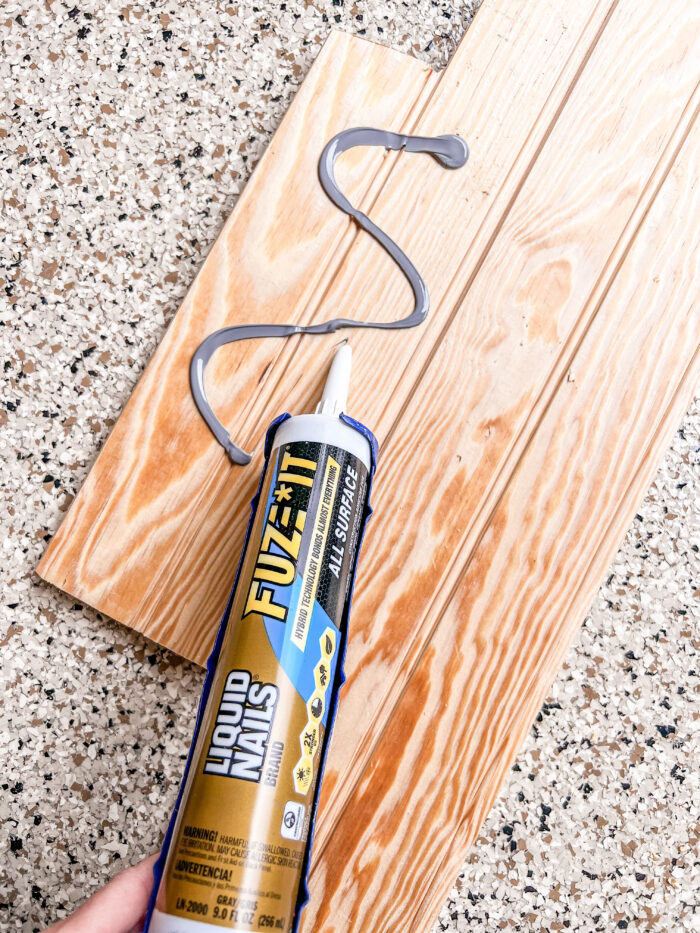
Attach your planks to the ceiling. There are a few different ways to attached tongue and groove on the ceiling. The important part is that it is done securely. Ideally every board would go into studs but for my walls, the studs run the same direction as the planks, so it would only be possible to have 1 out of every 5 planks be installed into a stud. Which isn’t going to work. So instead, I used a combination of liquid nails and a brad nailer.
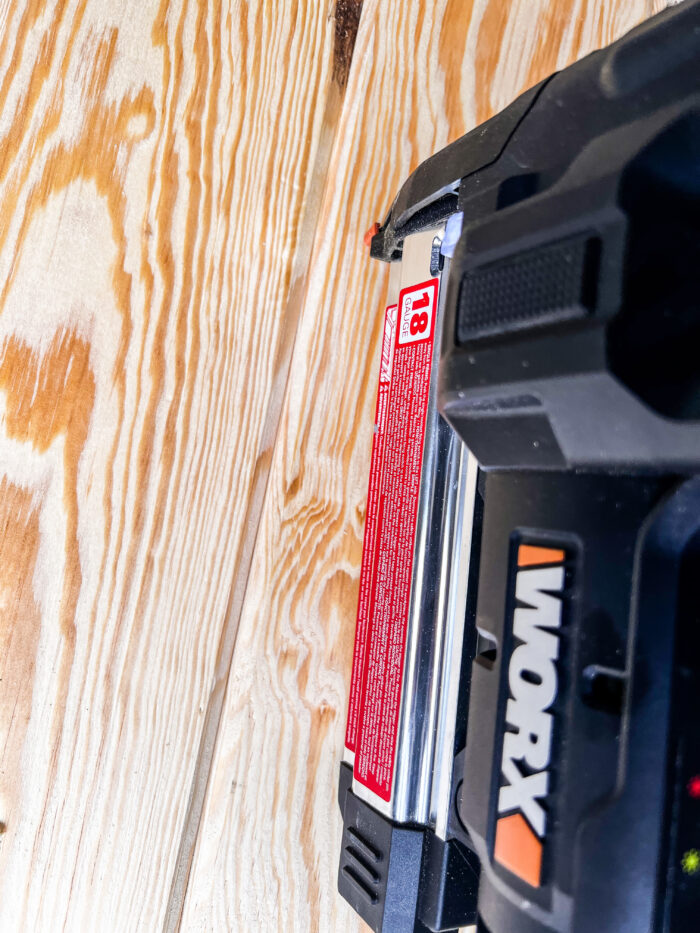
I would first put a good amount of liquid nails on the back of a plank, push it firmly to the ceiling and then put about 5 nails into the board.
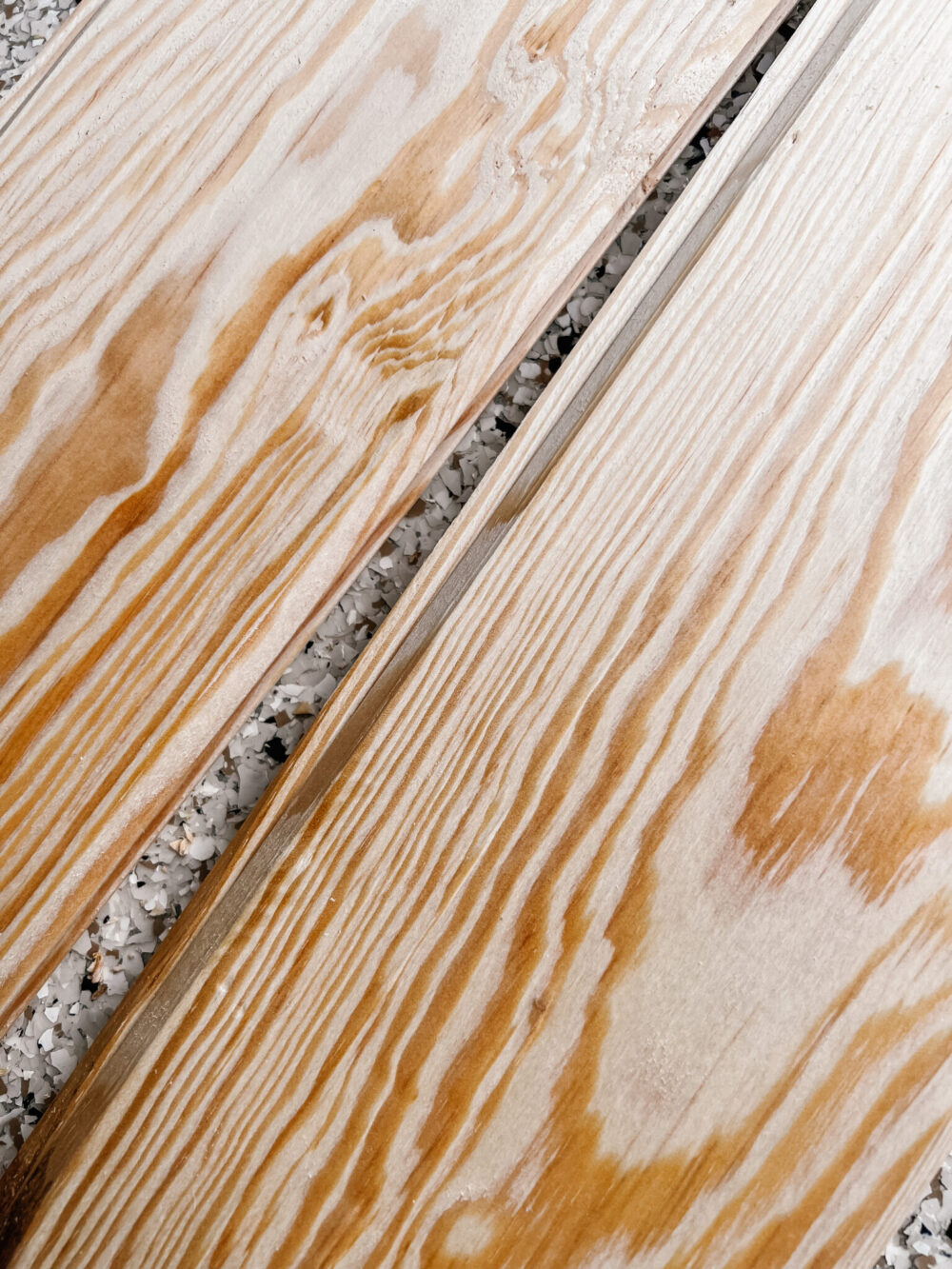
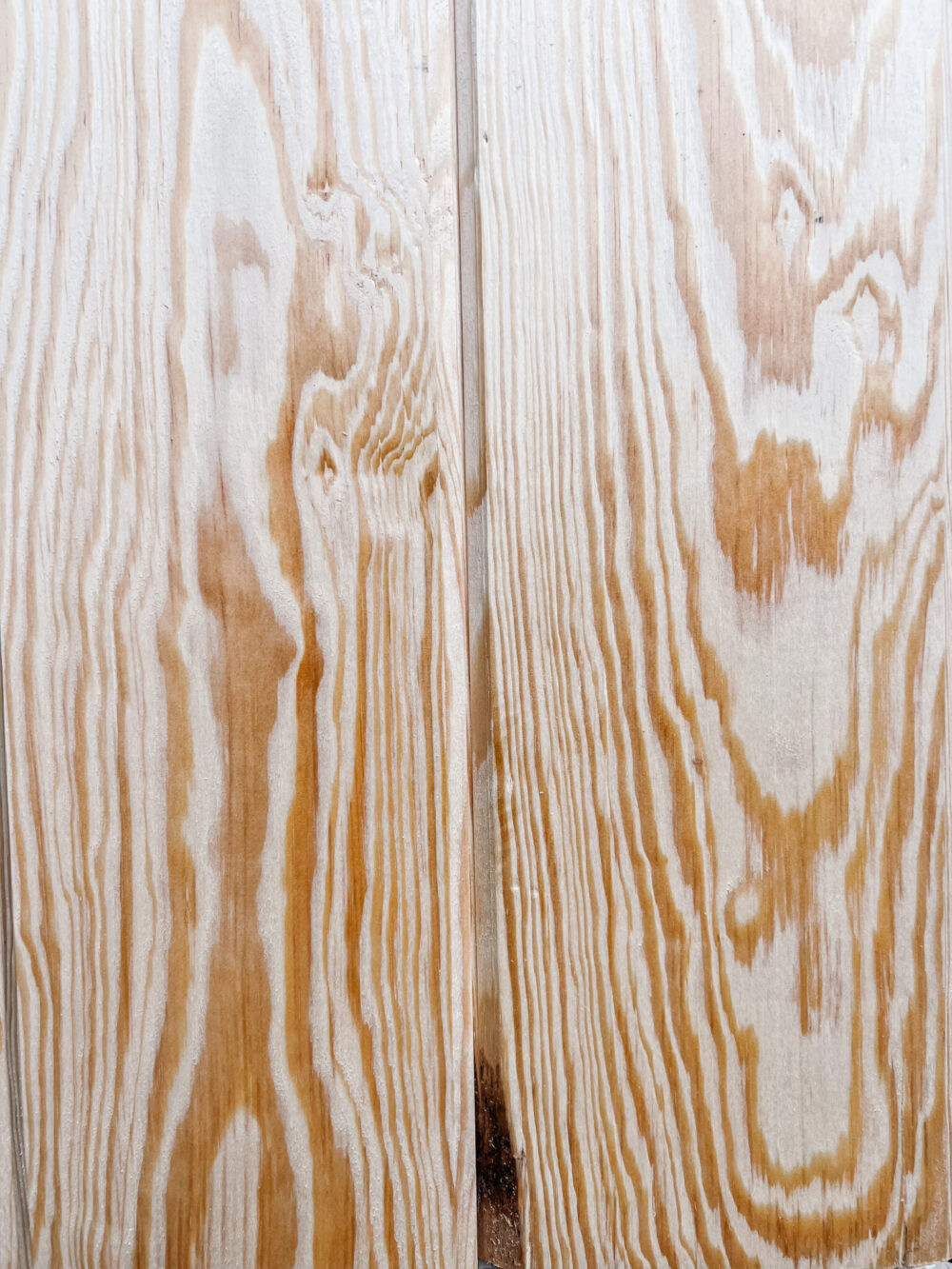
The whole point of the tongue and groove system is that they attach together seamlessly, the tongue goes into the groove of the next board, and so on and so on. They slide together pretty well for the most part, but sometimes I would use a mallet to push them together and get a tight fit. You want to make sure the pieces are all straight and level as you go.
Cutting around the vents and lights. To cut around the vents and light boxes I used a trick using my drill and jig saw. My jig saw is one of my top tools in my collection! It gives you the opportunity to make really custom cuts and cut out ANY shape you want!

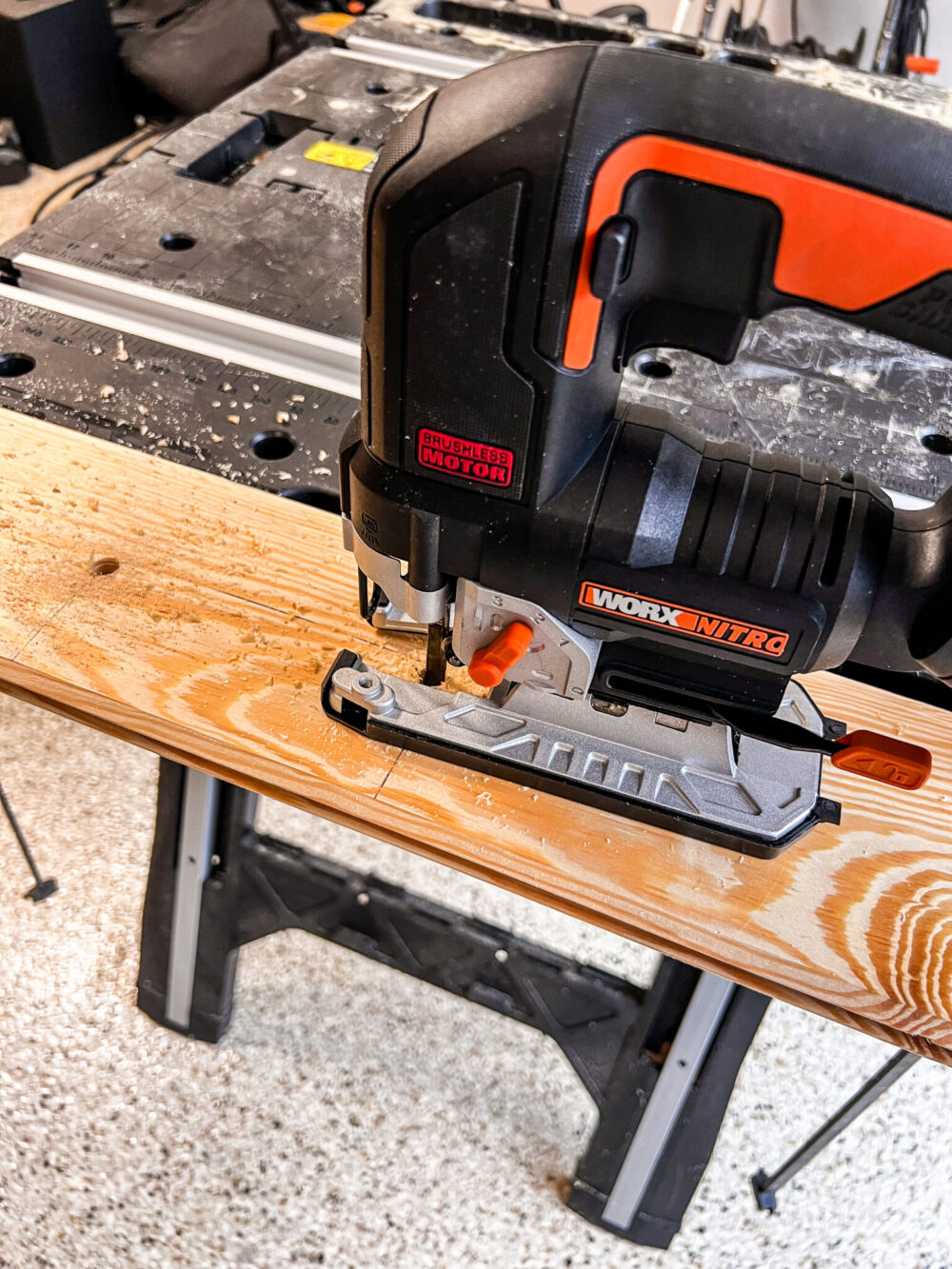
To cut a circle or square for the boxes here is what I do. First, using a 1/2″ drill bit, drill into each corner (or if doing a circle then somewhere along the outer edge. Then, take your jigsaw and use the hole from the drill bit to be the place where you start cutting the shape out. This allows you to start your jig saw blade at any point.

Perfect.
Tips for Cutting Ceiling Trim Moulding
While it is possible to get a perfectly clean line when installing wood planks, more often than not there will be slight gaps or variances do to inconsistent ceiling and wall sizes. To cover the raw edges of the tongue and groove and I added a single piece of decorative Shoe Trim Moulding to each board. This also added a decorative element and additional detailing on the ceiling.
Cutting any form of crown moulding can be really tricky and take a lot of practice. I had to really think this through and even laid in bed one night trying to figure it out. BUT I finally got it!
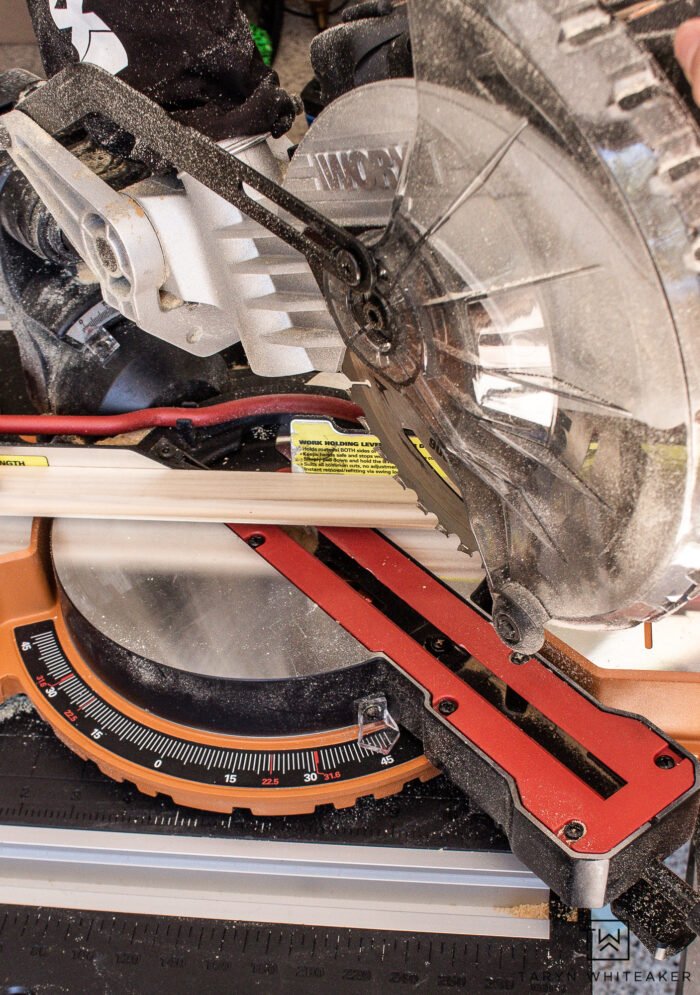
When cutting the corners, you want to set your Miter Saw to a 45 degree angle. If you are cutting a piece of moulding that is going to be coming into the corner from the right, turn your handle to the right. If you are cutting a piece that will be coming in from the left side of the angle, move your handle to the left 45 degree on your saw.
This the tricky part. How you place your moulding in the saw is super important. You want to place it in the saw at the same angle it will be sitting against the wall/ceiling. Since I’m using a corner trim, the flat part needs to be on the top, just like it will go against the ceiling.
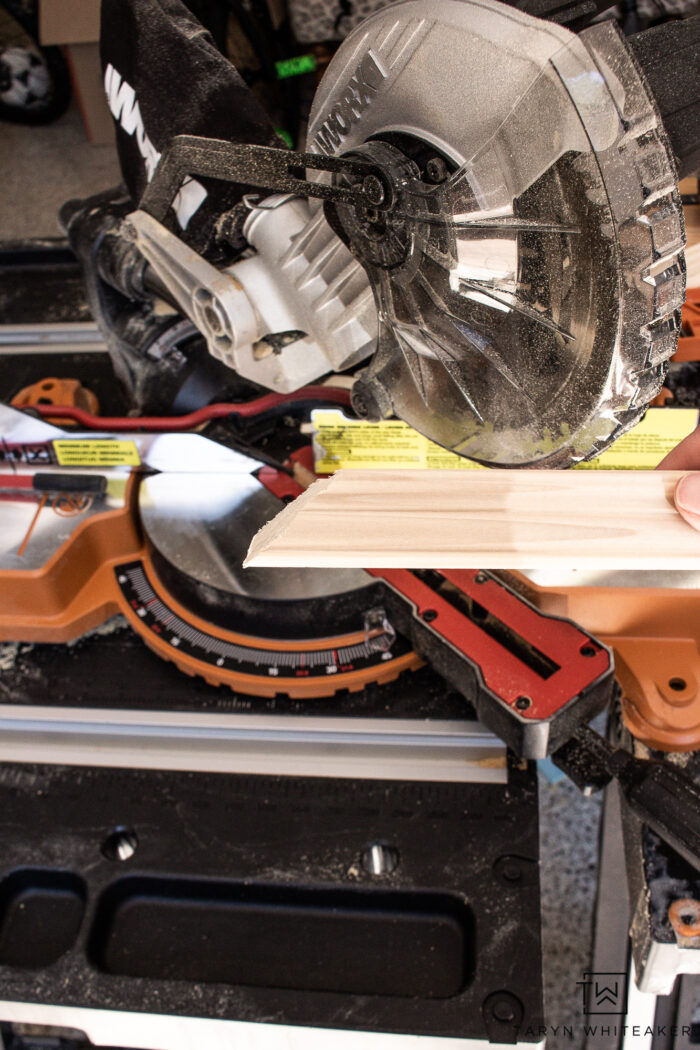
Hold it in place with the safety handle and cut it.
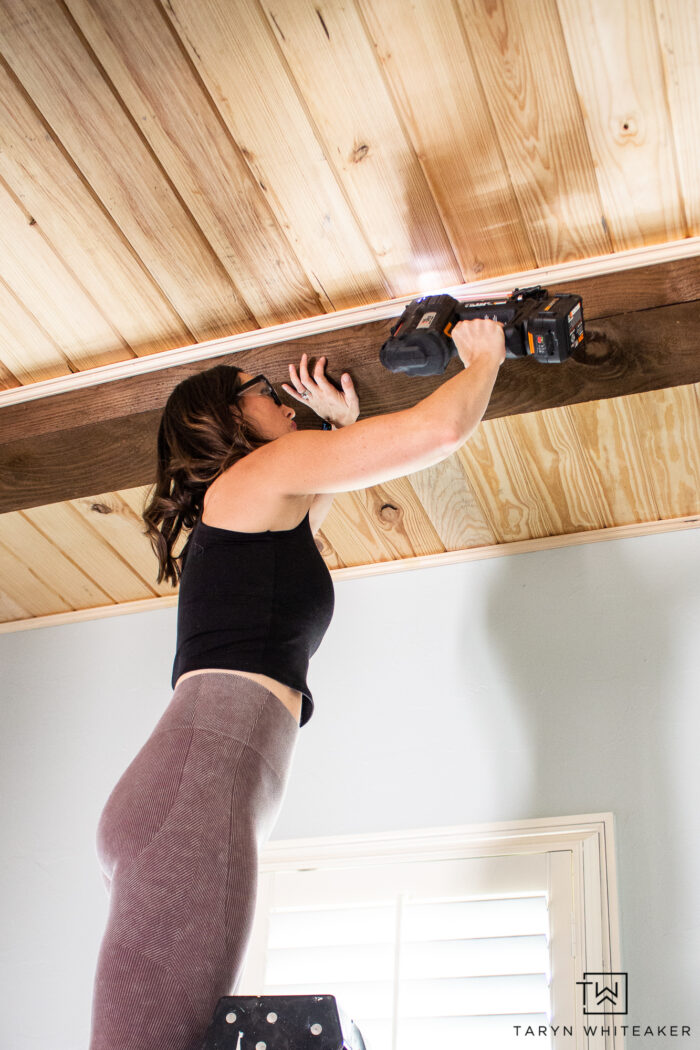
I installed the trim using my brad nailer, filled the seams with wood filler and then sanded it down smooth.
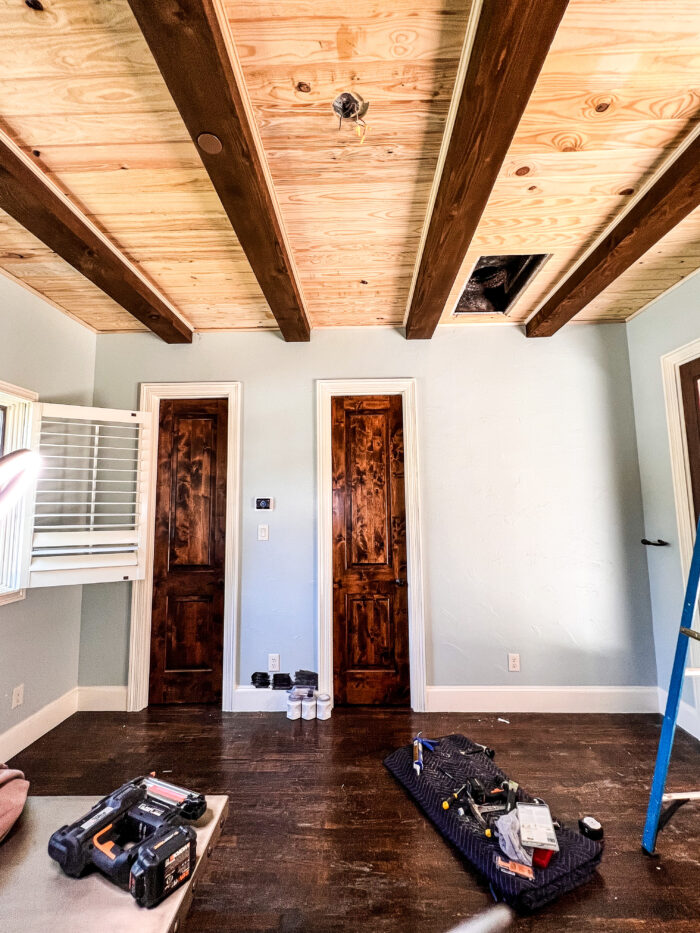
All done! Now time for paint and primer.
Timeless Moody Office Design
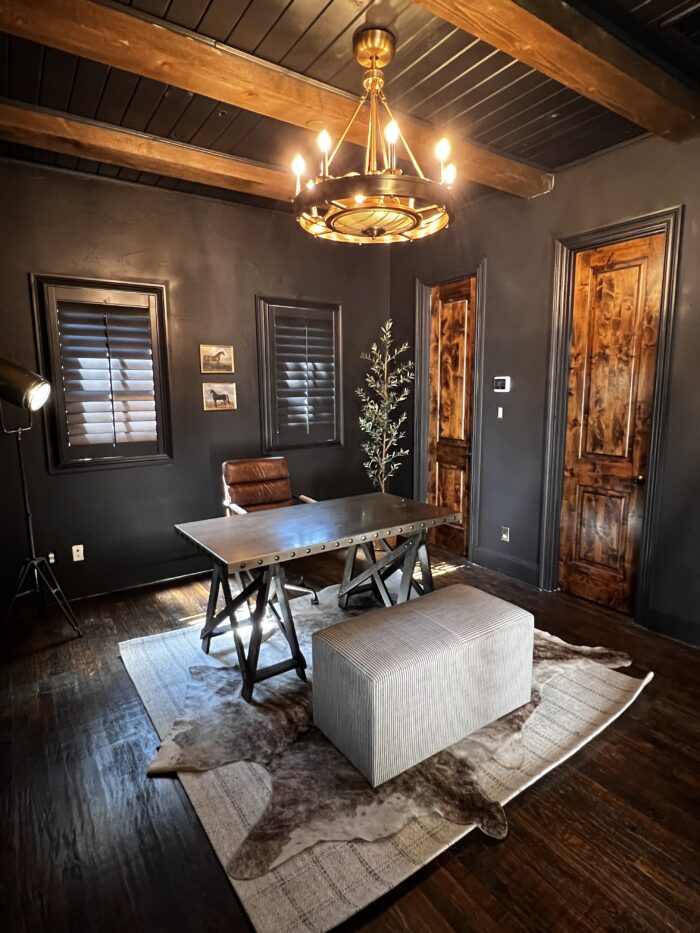
To finish off the design, I painted the walls and all the trim Sherwin Williams Black Magic. This was my first time using this color and it is so GOOD! It’s a very warm black. It pulls together brown and wood tones so nicely.

Our office also doubles as a guest space! You can see more on that on Instagram. We have phase 2 coming up in here soon with a murphy bed system!








Who makes the ceiling fan?
Here’s the link! https://bit.ly/3wmLqsq
Love it!!
Whoo, that turned out great! And the trim adds a amazing design interest.
Thank you so much!
This room has gone from ok, to WOW!!! What a transformation Taryn, it’s absolutely stunning! Great job,well done.
Thank you so much! I appreciate that!